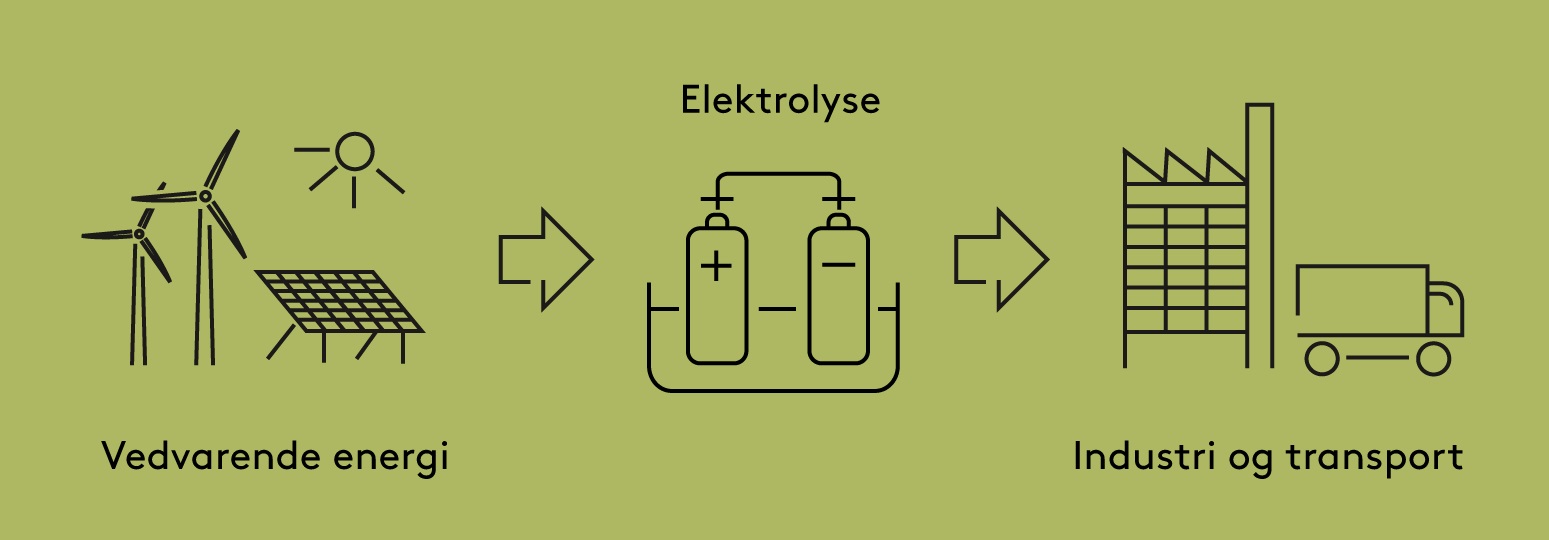
Researchers and Danish industrial giant to deliver crucial pieces for green conversion
SDU, Aalborg University and Danfoss behind crucial research project on efficient conversion of green energy. The project is part of Erhvervsfyrtårn Sydjylland, focusing on green energy and sector coupling.
Researchers from SDU and Aalborg University, in collaboration with the Danish industrial giant Danfoss, will provide a crucial piece for the production of the green hydrogen, which plays an important role in the green transition in Denmark.
- It is a crucial but small first step that can help ensure the transformation, sector coupling and establishment of PtX (Power-to-X, ed.) production, which is necessary if Denmark is to become self-sufficient in green energy and reduce its CO2 emissions, says professor and head of the Center for Industrial Electronics (CIE) at SDU in Sønderborg, Thomas Ebel.
The researchers from the two Danish universities are, jointly with Danfoss, to develop an energy-efficient converter for PtX production, making possible large-scale conversion of green electricity from wind and solar into liquid green fuels. Fuels to be used where direct electrical energy is not suitable e.g., in the heavy transport sector or in industry.
”Previously, we could not increase the voltage, but now we can, thanks to new semiconductor materials that we benefit from in this project. It will be fantastic to see a medium voltage converter in use with a completely new technology.

Conversion and storage of green energy is a crucial piece in the ambitions to achieve the Danish 2030 goal of a 70 percent reduction of greenhouse gases. At the same time, it can constitute a potential new export adventure of green energy technology, says the assessment from the
Sønderborg industrial giant Danfoss, which welcomes the cooperation with the public partners.
- It is a strong public-private partnership, which is to help ensuring that we reach the green goals in Denmark, and at the same time it can pave the way for a new Danish export adventure. We believe that the area constitutes a new, large business area for Danfoss, says Jakob Fredsted, Senior Vice President, Technology, at Danfoss Drives, where the industrial giant's share in the project is located, and who are experts in frequency converters to lead and control energy.
Huge potential
An important element in the project is the establishment of a so-called electrolysis plant at Alsion at the University of Southern Denmark in Sønderborg. If the production of green fuels is to become a new export adventure for Denmark - and Danfoss - it requires that the price of green hydrogen be lower. The development of a more energy-efficient converter, which is the core of the new project, will, all other things being equal, make it cheaper to produce green hydrogen from offshore wind or solar energy.
- We need electrolysis systems and energy converters that are better than the ones we have today. We focus on the energy converters in this project. The goal is to develop new solutions achieving a higher efficiency and a lower price. Even small improvements have huge potential because we are talking huge amounts of energy, says Jakob Fredsted.
The goal of the project partners is to increase the production of green hydrogen by two percent using the same amount of energy, solely through technology improvements. Two percent may not sound like much, but when scaled up, it will be really interesting in relation to both the green transition and as a business area for Danfoss.
The project is one of 13 in Erhvervsfyrtårn Sydjylland with a focus on green energy and sector coupling, which has received a total of DKK 105 million in funds from the EU.
Splitting water into hydrogen and oxygen
The upcoming electrolysis plant at SDU in Sønderborg is arousing enthusiasm among research colleagues at Aalborg University, where research has been conducted for several years into splitting water into hydrogen (electrolysis). The groundbreaking part of the project is the development of a so-called medium voltage converter, and with the test set-up, the researchers now have the opportunity to test both converter and electrolysis in a fully integrated system.
- For us, it is really a great opportunity to continue the work we have done for several years. Previously, we could not increase the voltage, but now we can, thanks to new semiconductor materials that we benefit from in this project. It will be fantastic to see a medium voltage converter in use with a completely new technology, says professor of power electronics at Aalborg University, Stig Munk-Nielsen.
Electrolysis and conversion of green energy
The project is one of 13 projects that form the core of Erhvervsfyrtårn Sydjylland.
In South Jutland, the focus is on green energy and sector coupling, where i.a. conversion and electrolysis are crucial elements for the utilization of green power from offshore wind turbines, for example.
SDU, Aalborg University and Danfoss have joined forces in a public-private partnership, where the main focus is on improving conversion - and reducing energy loss when converting and storing green electricity from a wind turbine as green hydrogen.
As part of the project, an electrolysis plant will be established at the SDU Campus in Sønderborg.
In its PtX strategy from December 2021, the government proposes that Denmark should aim to build 4-6 GW of electrolysis capacity in 2030. The expansion must, as far as possible, take place on market terms and support the realization of Denmark's export and business potentials within the PtX area. This goal can also contribute to lowering Denmark's climate footprint and achieving national and international climate goals.
The Business Beacon of South Jutland
Erhvervsfyrtårn Sydjylland (‘Business Beacon of South Jutland’, ed.) consists of a consortium in which i.a. SDU and companies such as Danfoss participate. In addition, the region's municipalities and business houses support the ambitions.
The Danish Board of Business Development has allocated DKK 105 million from EU funds to Erhvervsfyrtårn Sydjylland for 13 local test and demonstration projects, as well as for educational initiatives.